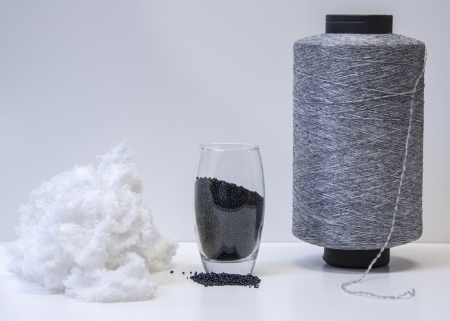Whether it’s an NHS hospital, a care home, or a local dental surgery; the holy grail for health and care professionals has always been to control infection and prevent the spread of disease.
In recent years there has been much focus on the physical environment and how antibacterial surfaces and improved cleaning regimes can help in the battle against bugs.
But one area which is increasingly neglected is fabrics, from soft furnishings – chairs, cushions and curtains – to staff uniforms.
Specialist healthcare fabrics are highly sophisticated and specialist-engineered solutions that have to be fit for purpose within the confines of a demanding caring environment
Charles Wilson, UK sales manager at workwear manufacturer, Carrington, explains: “Consider the daily tasks a nurse or care professional might undertake. Whether that’s changing a drip, taking bloods, or applying dressings; the scope for spillages on uniforms is not beyond the realms of possibility.
“As well as physical stains, it’s just as easy for uniforms to pick up harmful bacteria simply walking down the corridor.”
Issues to consider when specifying fabric for workwear garments include durability as budget pressures mean that, rather than uniforms being laundered on site at the end of each shift, they’re now often the responsibility of the individual.
And, while hospital guidelines say that uniforms should be washed at 62 degrees; a 2015 study found that 44% of the nursing staff surveyed washed their uniforms typically on a 30 or 40 degree cycle.
Reducing the risk
The recommendations also state that uniforms should be washed separately, but again this is rarely the case.
Opting for a fabric with inherent anti-bacterial properties helps to reduce the risk, while taking into consideration the practicalities of a nurse’s work and home routine.
Wilson said: “Many fabric manufacturers have historically worked with silver technology to prevent the spread of bacteria.
“Undergoing several evolutions to become known as sanitised, the technology can either be embedded into the yarn or the fabric can undergo a coating process to ensure it retains its anti-bacterial properties.
To strike a balance between being breathable and durable, we’re starting to see an increase in ‘middle-of-the-road’ fabrics
“It may be straight-forward to implement, but the innovation lies in marrying this technology with all the other elements at play including durability and breathability – resulting in a fabric that can withstand regular washing, but is also lightweight.”
Being lightweight is vitally important for staff, who are often on their feet all day rushing from place to place in temperatures typically set at around 25 or 26 degrees.
Wilson said: “To strike a balance between being breathable and durable, we’re starting to see an increase in ‘middle-of-the-road’ fabrics.
“Typically weighing around 175-195 grams per sq m, these are designed to be worn daily, and, unlike super-thin, throwaway scrubs, withstand regular washing while still feeling breathable.
“Most importantly, these fabrics do all of the above while still retaining that all-important anti-bacterial property over time.
“It may appear a small piece of the puzzle but, by investing in these fabrics, healthcare organisations can ensure they are doing their bit in the fight against infection.”
Another issue when considering fabric choice is sustainability and environment impact.
For some fabric manufacturers recycling, re-using, taking back, upcycling and sustainable development are factors embedded into their very fibres.
But the need to consider environmental impact and find sustainable solutions isn’t standard practice across the industry.
Protecting the environment
A key aspect to think about is raw material choice, especially in terms of renewability and recyclability, care and maintenance, energy usage, and CO2 emissions.
Specialist healthcare performance fabrics have to be fit for purpose, aside from offering waterproof, stain-repellent, and flame-retardant properties.
The need for a domestic appearance while providing protection from infection with germ-proof anti-microbial products is also essential.
Camira Fabrics is one manufacturer leading the way and successfully diverts 35 tonnes of material from landfill every year.
It may appear a small piece of the puzzle but, by investing in these fabrics, healthcare organisations can ensure they are doing their bit in the fight against infection
A major step for the company, and improving the environmental performance of fabrics, was re-engineering its top-selling Xtreme fabric, from virgin/new polyester to 100% recycled polyester.
The company then took this one step further by recycling its own polyester waste and, more recently, a new 100% post-consumer recycled fabric, Rivet, which is made from plastic bottles.
Taking this thinking into its dedicated healthcare range, Camira developed a closed-loop cycle whereby up to 25% of the fabric contains its own polyester waste material.
A spokesman said: “Specialist healthcare fabrics are highly sophisticated and specialist-engineered solutions that have to be fit for purpose within the confines of a demanding caring environment.
“A huge amount of time, commitment and resources go into achieving the highest of environmentally-recognised standards and the fact your supplier holds accreditation and certification demonstrates they aren’t simply paying lip service, but actually invest and believe in sustainability.”

